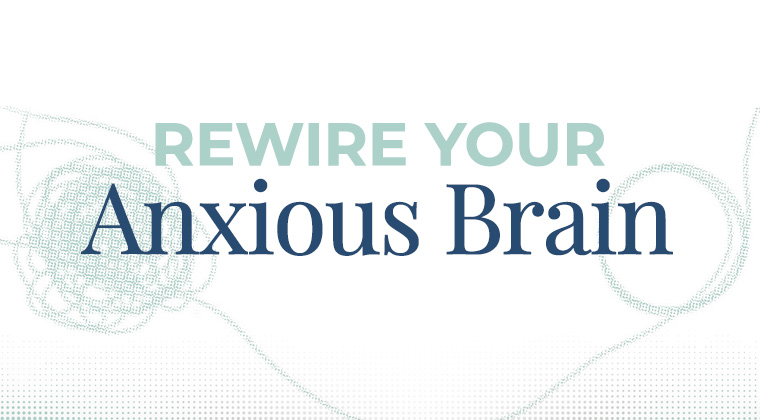We all must face losses of one kind or another. For example, both of my parents have died in the last few years. Besides the dramatic losses of loved ones, there are other losses — sometimes as wrenching — having to do with animal companions, place (e.g., refugees), or limbs or faculties. Subtle, even abstract losses — such as reputation, standing, trust, or innocence — can also tear at your heart.
Then, of course, there are the many losses woven into the fabric of everyday life. Once in Yosemite, when our son was maybe six or seven, he was watching a rugged-looking rock climber (who, we found out later, had just received his MBA) play chess with himself in a café. Wally — the climber — invited Forrest to play a game with him, which our son enjoyed immensely. When he was finally checkmated (after a valiant struggle, I’m proud to say!), Forrest tried nearly as valiantly to persuade Wally to play another game. Wally smiled, and then said, “You know, all good things have to come to an end.”
Whether it’s a warm snooze in bed, a hot fudge sundae, a vacation, a great conversation, or old friendships when we move on to new situations . . . all good things must indeed come to an end: an irrevocable loss forever of that particular moment of experience.
This fact of loss, ranging from trivial to shattering, is so central to the human experience that all the world’s major philosophies and religions have grappled with how to find meaning in it, and ways to cope. Consider Existentialism, developed mainly in refined European intellectual circles in the 20th century, whose central theme is the confrontation with personal mortality. Or these words, written down somewhere in a small village or dusty caravan over two thousand years ago:
To every thing there is a season, and a time to every purpose under heaven:
A time to be born, and a time to die;
A time to plant, and a time to pluck up that which is planted;
A time to kill, and a time to heal;
A time to break down, and a time to build up;
A time to weep, and a time to laugh;
A time to mourn, and a time to dance;
A time to cast away stones, and a time to gather stones together;
A time to embrace, and a time to refrain from embracing;
A time to get, and a time to lose;
A time to keep, and a time to cast away;
A time to rend, and a time to sew;
A time to keep silence, and a time to speak;
A time to love, and a time to hate;
A time of war, and a time of peace.
~ Ecclesiastes 3:1-8
Every time must come to an end – whether it is pleasant or unpleasant, ugly or beautiful, wholesome or evil – because of the inherent nature of the universe: if things did not naturally end, then there would be no change; the universe would be static, eternally the same, and life could not exist. Who knows, perhaps there may be universes of that sort, but the one in which life can occur – this one, which contains the life that is reading these words – must endlessly change. It is precisely that which enables new things – loves, children, sunrises, teachings, pleasures – which also brings their endings. And our losses.
In Buddhism, this impermanence is regarded as one of the three fundamental “marks” of existence (the others are interdependence/”not-self,” and suffering). In a traditional formulation, it is said that all beginnings are followed by an ending, all gains by a loss, all gathering together by dispersal. In the modern vernacular: rust never sleeps.
We suffer in large part because we both cling to pleasant things that must inevitably change, and resist unpleasant things that are going to change anyway. We are fighting time, to no avail.
Of course, this way of life comes from the blueprint of our evolutionary heritage: our sorrows are the unfortunate by-product of primal mechanisms – holding onto the pleasant, fighting or fleeing the unpleasant, and moving on from the neutral – that increase the odds of having grandchildren. Suffering is collateral damage.
Nonetheless, because we are human and aware and able to observe ourselves and reflect on the results of our actions, we can gradually disengage from this ancient machinery. We can find other wellsprings for living happily and lovingly besides reacting and craving and clinging.
Many paths both embody this peaceful happy wisdom, and lead to its complete fulfillment. For example, the ultimate aim of Buddhist practice is to be free of the machinery of grasping, and awakened from the enchantments it uses to beguile us to reach for the booby prize: this is why it’s called a path of Liberation.
In Western psychology, efforts to help people with their losses have ranged from Freud’s theorizing about instincts for creating and destroying, to more recent protocols for healing trauma. And these approaches are becoming integrated with our growing understanding of the nervous system, particularly as neuroscientists develop technologies that can examine living brains in both joy and misery.
In Part One of this article, we will first lay a foundation of information about your own brain, and then explore the latest science about what goes on inside it when you experience a loss, or merely anticipate one. In Part Two, we weave together methods from psychology and contemplative practice – both informed by neuroscience – that you can use to bear and cope with and heal and grow from your difficult experiences, and those of others you care about.
In closing, let me express my gratitude for the 2007 Kara Conference on grief recovery, which supported the presentation that is the basis for this article. (You can download my talk here: Grief Recovery: Perspectives from Neuroscience and Contemplative Wisdom.)
Perspectives
Loss is just one of the many human experiences that is challenging, and while it will be our focus – and, in particular, the loss of loved ones – you could apply much of our discussion to recovering from disappointment, frustration, stress, and trauma.
By the way, although the term, “recovery,” is commonly used to summarize the healthy response to losses, it has a few limitations to keep in mind:
- It implies that grieving is a departure from some healthy baseline, and that the successful response to loss is a return to baseline. But in fact, we never do return to the original baseline, since we are always changing and developing.
- Grieving and all that comes with it can in fact bring us to a healthier, better baseline.
- Recovery implies a fixed end, when in fact the research on loss and grief indicates an ongoing process of meaning-making, reflection, growth, setbacks, integration, and so on.
- Recovery also has Western connotations of finishing up one’s business with something and then moving onto other matters. In other cultures, “recovery” could be seen as dishonoring those who have passed.
Further, our focus on neuropsychological subjects is in a context of great respect for the soulful, mysterious, and even Transcendental dimensions of grieving and loss. And there are more methods for coping with loss than the ones explored here.
Last, you’ll see Buddhist perspectives in this article, since those are the ones I know best from the world’s six major contemplative traditions, but the other ones –Hindu, Jewish, Muslim, Christian, and Shamanic – also have much to offer in helping us respond to loss, and grow in wisdom and love.
Mind and Brain Are One
The Working Hypothesis
A working hypothesis accepted by nearly all psychologists and neurologists is that almost every – and perhaps every – subjective state of the mind is correlated with an objective state of the brain.
Think of it this way: from this viewpoint, just about everything we are aware of, including our own sense of self, has a one-to-one correspondence with underlying, physical, brain structures and activities.
Just like a letter to friend or a picture of a sunset on your computer requires and represents an underlying pattern of magnetic charges on your hard drive.
Experience Changes the Brain
First, this means that, as your experience changes, your brain changes. It changes both temporarily, millisecond by millisecond, AND it changes in lasting ways due to the fact that, “as neurons fire together, they wire together.” The fleeting flow of experience leaves behind lasting marks on your brain, much like a spring shower leaves a trail of little gullies on a hillside.
The Brain Changes Experience
Second, this correlation between your experience and your brain means that, as your brain changes, your experience changes.

For example, this is a picture of a part of the brain that is very active during deep meditation or prayer, when the rest of the brain is relatively quiet. The active part is a little hard to see; it’s the pale blob that looks like a small caterpillar just to the right of the mid-line. This part of the brain is located in a region called the cingulate gyrus, which plays a central role in many important functions related to grieving and recovery, including controlling attention, weaving together memory and emotion, self-observation, and integrating thinking and feeling.
Through repeated use, regions in the brain build up connections among neurons, plus there’s often increased capillary activity, so they get literally thicker; this is true for pianists (with and without moving their fingers!), taxi drivers . . . and meditators. And given my own gray hairs, it’s worth knowing that these effects of cortical thickening for meditators were most pronounced with aging.
Using Your Mind to Change Your Brain to Benefit Your Being
It follows, then, that if you change your brain in some skillful way, you can also change your state of being in a skillful way. By using your mind to change your brain to benefit your whole being – and thus everyone around you, as well – then you can recover from your losses, and any other challenging experience, more gracefully and effectively.
Recognizing Our Ignorance
Of course, it’s important to recognize how much we do not yet know. The close study of the brain and mind is about where biology was in the early 1700s, about a hundred years after the invention of the microscope. As Tenzin Palmo wrote, “We ask, ‘What is a thought?’ We don’t know, yet we are thinking continually.”
Your Brain – The FAQs
While recognizing the limitations of our knowledge, there is a still a great deal known about your brain, and it’s all pretty amazing. Here are some of the highlights.
Size
- 3 pounds, the consistency of cottage cheese
- 1,100,000,000,000 neurons, total
- 100 billion “gray matter” neurons
- Each with about 10,000 synapses (connections to other neurons)
- Therefore, about one quadrillion – 1,000,000,000,000,000 – total synapses
Speed
- Neurons firing 10 to 100 times a second
- Signals crossing your brain in a tenth or hundredth of a second
- Neural nets integrated by waves of coherent activity, ranging from a few times a second up to 80/second
Activity
- Always on (24 hours a day, 7 days a week, 365 days a year)
- In a sense, your brain is forever pulsing. Each pulse rapidly disintegrates, and then there is an instant of fertile instability out of which the next pulse comes. That space of possibility is a kind of “emptiness” akin to the absolute nature posited in Tibetan Buddhism within which the universe eternally flickers into and out of existence.
- Uses about 25% of the body’s blood flow, oxygen, and glucose
Structure
- Massive, pervasive, redundant interconnectivity
- Circular, feedback loops
- Different circuits share the same sub-circuits (even individual neurons), one reason for the seemingly random associations of the “stream of consciousness”
Profound Complexity
- With a quadrillion synapses – give or take a few million – the number of possible brain states is 1 followed by a million zeros. Your brain has more possibilities than the number of particles in the universe.
- Its dynamic interconnectivity makes the brain literally the most complicated object known to science, more complex than a supernova or the earth’s climate.
The Natural State of the Brain – and Mind
Before we consider the brain when it is grieving – and thus how to help it down the path of recovery – it is worth noting that the natural state of the brain is already “recovered”:
- The parasympathetic wing of the autonomic nervous system is activated – associated with relaxed contentment.
- Pleasant hormones and neurotransmitters such as the endorphins, serotonin, dopamine, norepinephrine, and oxytocin bathe the reward centers of the brain.
- Brain waves emphasize Delta waves (1 – 3 Hz) and Theta waves (4 – 7 Hz), with some Beta waves (14 – 30 Hz) mixed in. In particular, when you are wrestling with something, your brain waves have a certain jumbled quality to them, but when you arrive at a decision, the waves come into resonance with each other.
In effect, the natural, resting state of the brain – when it is not troubled by a decision or a problem or a worry – has a settled, even-keeled, stable hum to it. In other words, your true nature – “underneath” or “the space or witness of” grieving – is always already awake, present, peaceful, benign, and quietly happy.
This is really good news! Mother Nature is on your side as you recover from a loss; there’s a gentle breeze at your back as you head on home.
The Psychology of Loss
If you like, take a moment to remember a significant loss, perhaps of a loved one. Let that remembering evoke an experience of the loss – though don’t let it be overwhelming – and then notice what the experience feels like. Notice its emotional qualities . . . the sense of it in your body . . . the thoughts associated with it . . . any longings or wants . . . any images . . . any grieving . . . and anything else. And then let all that go.
As you probably noticed, the experience of loss can have many elements to it, including these common aspects:
- Feelings of loss; deep sorrow and distress
- Thoughts, images, memories of what was lost • Pining, yearning for what was lost
- Related reactions (e.g., anger, guilt, unresolved communications, stress of dealing with the aftermath, demoralization, anhedonia, depression, suicidal inclinations)
This psychological material can be very compelling, even intrusive. And sometimes the experience of loss is anticipatory, thinking about something that might happen.
The Neurology of Loss
Since the experience of loss has many aspects to it, it draws on many resources in the brain, including those dealing with attention, memory, emotion, planning, language, and relationships. To quote from a recent study (and give you a dose of academic lingo), even just one element of that experience – grieving – lights up many circuits in your brain:
Grief is mediated by a distributed neural network that subserves affect processing, mentalizing, episodic memory retrieval, processing of familiar faces, visual imagery, autonomic regulation, and modulation/coordination of these functions.
Functional Neuroanatomy of Grief: An fMRI Study. Am J Psychiatry 160:1946-1953, November 2003. Harald Gündel, Mary-Frances O’Connor, Lindsey Littrell, Carolyn Fort, Richard D. Lane
Grieving activates both the general network described in the quote, as well as specific areas linked to the aspect of grief that’s primary in the moment. For example, in the study above, bereaved women looking at pictures of their deceased loved one activated the cuneus, superior lingual gyrus, insula, dorsal anterior cingulate cortex, inferior temporal gyrus, and fusiform gyrus. On the other hand, words related to their loved one activated the precuneus, precentral gyrus, midbrain, and vermis.
Conclusion
From this one study on the differences between image-laden grieving and verbally-rich grieving, you can see some of the complexity of neurological processes involved in grappling with a loss – or really, any other challenging experience. While this complexity may seem daunting (and why, Rick Mendius says, many medical students quickly trot away from neurology, leaving the field open to masochists like himself!), it actually creates a great opportunity for giving you so many different points of intervention into your own brain.
In Part Two of this article, we’ll go through five of those points of intervention in detail; they are your parasympathetic nervous system, frontal lobes, cingulate gyrus, insular cortex, and amygdala. You’ll learn ways to stimulate and strengthen the healthy capacities of each one, both from general psychology and from the contemplative disciplines.
See you then!




